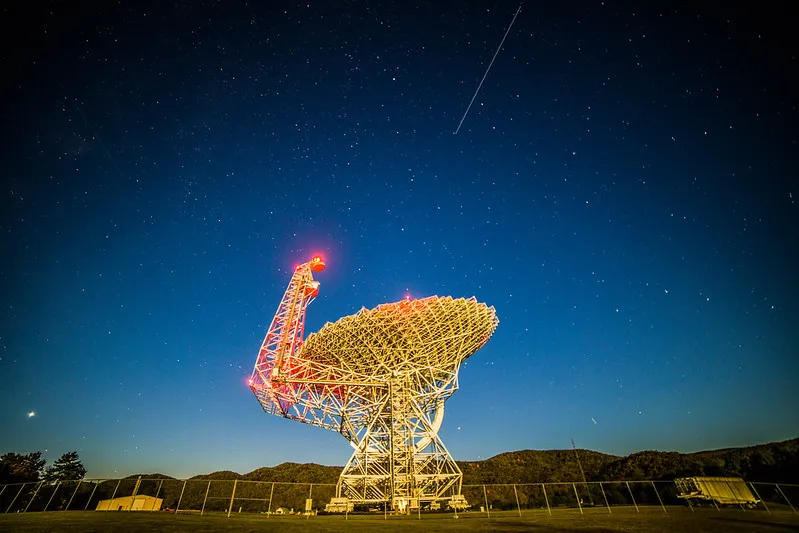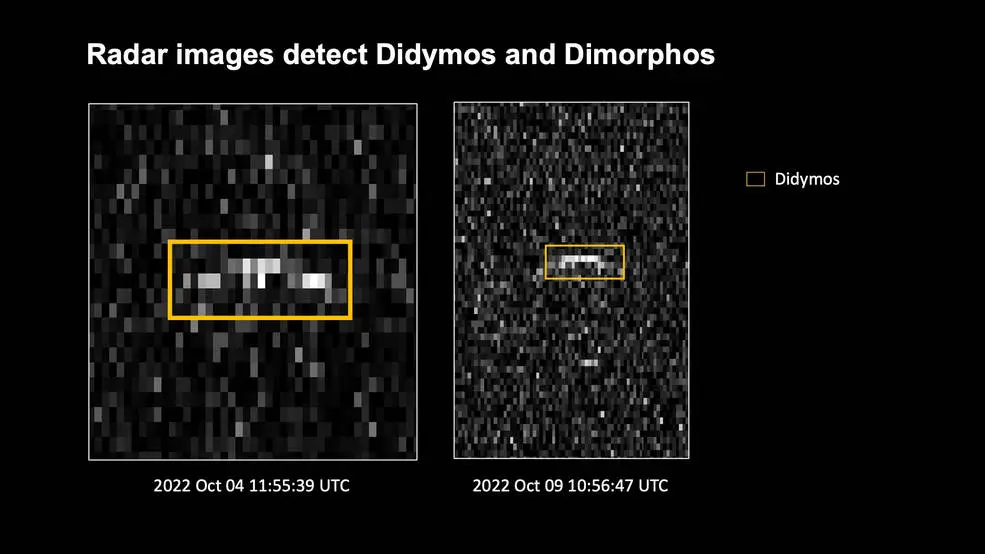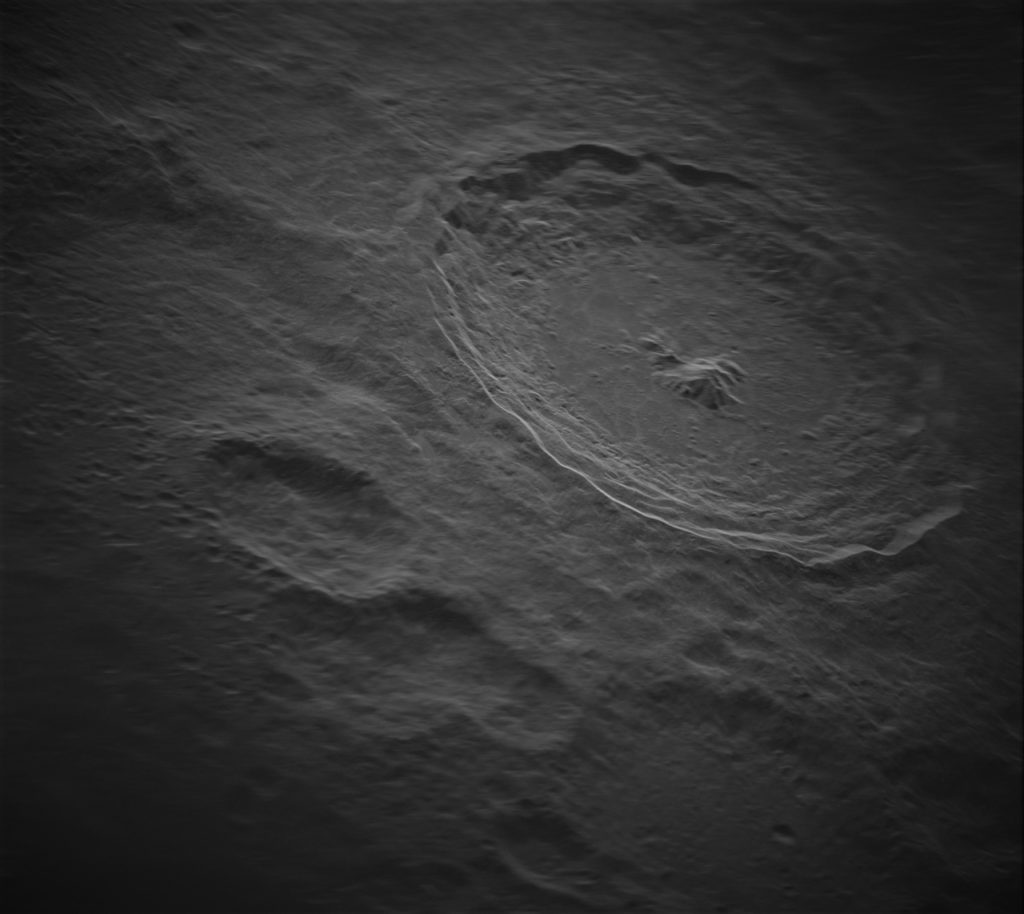AUI will present at the 247th meeting of the American Astronomical Society in Phoenix from January 4-8.
Recent News
ALMA Helps Unmask Monster Black Hole Behind Record-Breaking Cosmic Burst
Astronomers have used the Atacama Large Millimeter/submillimeter Array (ALMA) together with a suite of space- and ground-based telescopes, to study AT 2024wpp, the most luminous fast blue optical transient (LFBOT) ever observed.
Astronomers Make First Radio Detection of Rare Supernova Type, Revealing Secrets of Stellar Death
Astronomers using the U.S. National Science Foundation Very Large Array have captured the first-ever radio signals from a rare class of stellar explosion known as a Type Ibn supernova.
Can Astronomers Use Radar to Spot a Cataclysmic Asteroid?

Photo by Jee Seymour.
Scientists share their latest findings and the future of radar in planetary science and defense
How can humans protect the Earth from “devastating asteroid and comet impacts?” According to the National Academies and their 2023-2032 Planetary Science and Astrobiology Decadal Survey, ground based astronomical radar systems will have a “unique role” to play in planetary defense.
There is currently only one system in the world concentrating on these efforts, NASA’s Goldstone Solar System Radar, part of the Deep Space Network (DSN). However, a new instrument concept from the National Radio Astronomy Observatory (NRAO) called the next generation RADAR (ngRADAR) system will use the National Science Foundation’s Green Bank Telescope (GBT) and other current and future facilities to expand on these capabilities.
“There are many applications for the future of radar, from substantially advancing our knowledge of the Solar System, to informing future robotic and crewed spaceflight, and characterizing hazardous objects that stray too close to Earth,” shares Tony Beasley, NRAO’s director.
On Saturday, February 17th, scientists will showcase recent results obtained with ground-based radar systems at the American Association for the Advancement of Science’s annual conference in Denver, Colorado.
“NRAO, with the support of the National Science Foundation and oversight by Associated Universities, Inc., has a long history of using radar to further our understanding of the Universe. Most recently the GBT helped confirm the success of NASA’s DART mission, the first test to see if humans could successfully alter the trajectory of an asteroid, “ shares NRAO scientist and ngRADAR project director Patrick Taylor.

The yellow box shows the asteroid Didymos. The images are views of the Didymos and Dimorphos binary asteroid system obtained from radar facilities at NASA Jet Propulsion Laboratory’s Goldstone planetary radar in California and the National Science Foundation’s Green Bank Observatory in West Virginia. Shown at left are Oct. 4, 2022, observations from Goldstone observations; at right are combined Goldstone and Green Bank observations from Oct. 9, 2022. Credits: NASA/Johns HoNASA/Johns Hopkins APL/JPL/NASA JPL Goldstone Planetary Radar/National Science Foundation’s Green Bank Observatorypkins APL/JPL/NASA JPL Goldstone Planetary Radar/National Science Foundation’s Green Bank Observatory.
The GBT is the world’s largest fully steerable radio telescope. The maneuverability of its 100-meter dish enables it to observe 85 percent of the celestial sphere, allowing it to quickly track objects across its field of view. Adds Taylor, “With the support of Raytheon Technologies, ngRADAR pilot tests on the GBT—using a low-power transmitter with less output than a standard microwave oven—have produced the highest-resolution images of the Moon ever taken from Earth. Imagine what we could do with a more powerful transmitter.”

Scientists sharing their results at AAAS include Edgard G. Rivera-Valentín of Johns Hopkins Applied Physics Laboratory and Marina Brozović of NASA’s Jet Propulsion Laboratory, which manages Goldstone and the DSN. Adds Brozović, “The public might be surprised to learn that the technology we use in our current radar at Goldstone hasn’t changed much since World War II. For 99% of our observations, we transmit and receive from this one antenna. New radar transmitter designs, like ngRADAR on the GBT, have the potential to significantly increase the output power and waveform bandwidth, allowing for even higher resolution imaging. It will also produce a scalable and more robust system by using telescope arrays to increase the collecting area.”
“NRAO is an ideal organization to lead these efforts because of the instruments we have available to receive radar signals, like the Very Long Baseline Array has done in our pilot ngRADAR project,” explains Brian Kent, NRAO scientist and director of science communications, who coordinated the presentation at AAAS, “Future facilities like the next generation Very Large Array, as a receiver, will create a powerful combination for planetary science.”
How does ground-based astronomical radar expand our understanding of the Universe? By allowing us to study our nearby Solar System, and everything in it, in unprecedented detail. Radar can reveal the surface and ancient geology of planets and their moons, letting us trace their evolution. It can also determine the location, size, and speed of potentially hazardous Near Earth Objects, like comets or asteroids. Advances in astronomical radar are opening new avenues, renewed investment, and interest in joint industry and scientific community collaborations as a multidisciplinary venture.
About NRAO & GBO
The National Radio Astronomy Observatory (NRAO) is a facility of the National Science Foundation, operated under cooperative agreement by Associated Universities, Inc.
The Green Bank Observatory is a facility of the National Science Foundation and is operated by Associated Universities, Inc.
This news article was originally published on the GBO website on February 16, 2024.
Recent News
AUI to Attend AAS 247 Conference
AUI will present at the 247th meeting of the American Astronomical Society in Phoenix from January 4-8.
ALMA Helps Unmask Monster Black Hole Behind Record-Breaking Cosmic Burst
Astronomers have used the Atacama Large Millimeter/submillimeter Array (ALMA) together with a suite of space- and ground-based telescopes, to study AT 2024wpp, the most luminous fast blue optical transient (LFBOT) ever observed.
Astronomers Make First Radio Detection of Rare Supernova Type, Revealing Secrets of Stellar Death
Astronomers using the U.S. National Science Foundation Very Large Array have captured the first-ever radio signals from a rare class of stellar explosion known as a Type Ibn supernova.
